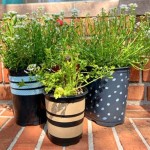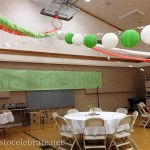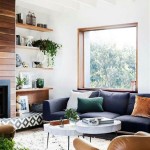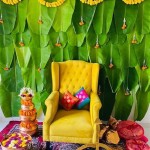How to Decorate a Square Coffee Table
A square coffee table serves as a central point in many living rooms, offering functionality and aesthetic appeal. Decorating this space effectively requires a balanced approach, considering both the practical purpose of the table and the overall design of the room. The goal is to create a visually pleasing and accessible surface that complements the surrounding furniture and enhances the room's atmosphere. This article will explore key principles and strategies for decorating a square coffee table, offering guidance on achieving a sophisticated and well-curated look.
Understanding the Square Coffee Table's Role
Before embarking on the decoration process, it is crucial to understand the role the square coffee table plays within the room. In many cases, it's more than just a place to rest drinks or magazines. It is a focal point, a visual anchor, and a functional surface for everyday activities. A square table, due to its shape, often occupies a larger footprint than other shapes, demanding consideration of proportion and balance.
The size of the coffee table should be proportionate to the surrounding seating. A general rule of thumb is that the coffee table should be approximately two-thirds the length of the sofa. The height should be similar to the height of the sofa cushions, allowing for easy access. Deviating significantly from these proportions can disrupt the visual harmony of the room. A too-small coffee table will feel lost in the space, while an excessively large one can overwhelm the area and hinder movement.
The style of the coffee table should also complement the overall design aesthetic of the room. A modern, minimalist room might benefit from a sleek, glass-topped square table, while a more traditional setting might call for a wooden table with classic detailing. The material, color, and finish of the table should harmonize with the other furniture and décor elements in the room.
Consider the primary function of the table. Is it primarily for display, for entertaining, or for everyday use? The answer will dictate the types of items placed on the table. A table used primarily for entertaining might require space for coasters, serving trays, and decorative objects. A table used for everyday use might need to accommodate remotes, books, and other frequently used items.
Key Principles of Coffee Table Decoration
Successful coffee table decoration hinges on several key principles, including scale, balance, texture, and color. Applying these principles thoughtfully will ensure a visually appealing and functional arrangement.
Scale: The scale of the objects placed on the coffee table should be proportionate to the size of the table itself. Avoid using items that are excessively large or small, as they will appear out of place. A few strategically placed larger items often create a more impactful statement than numerous smaller items. For instance, a large coffee table book can serve as a base for a smaller decorative object, providing visual weight and grounding the arrangement.
Balance: Achieving balance is essential for creating a visually harmonious arrangement. This can be accomplished through both symmetrical and asymmetrical arrangements. Symmetrical arrangements involve mirroring objects on either side of the table, creating a sense of formality and order. Asymmetrical arrangements, on the other hand, involve placing objects of varying sizes and shapes in a way that creates visual interest and balance. This approach is often more dynamic and contemporary. For instance, a stack of books on one side of the table can be balanced by a sculptural object on the other side.
Texture: Incorporating a variety of textures adds depth and visual interest to the coffee table arrangement. Consider combining smooth and rough textures, matte and glossy finishes, and natural and manufactured materials. A wooden tray, for example, can provide a textural contrast to a glass vase or a metal candle holder. The interplay of textures creates a more engaging and tactile experience.
Color: The color palette of the coffee table décor should complement the overall color scheme of the room. Consider using accent colors to add pops of visual interest, or opt for a more monochromatic scheme for a sophisticated and understated look. A bright floral arrangement can provide a vibrant burst of color, while a collection of neutral-toned objects can create a calming and serene atmosphere. The color of the objects on the table should also harmonize with the color of the coffee table itself.
Practical Decoration Strategies
Several practical strategies can be implemented to decorate a square coffee table effectively. These strategies involve selecting appropriate items, arranging them thoughtfully, and maintaining the table's functionality.
The Rule of Three: The "rule of three" is a well-known design principle that suggests arranging objects in odd numbers is often more visually appealing than even numbers. This principle can be applied to coffee table décor by grouping objects in sets of three, five, or seven. This creates a sense of visual rhythm and balance. However, this is more of a guideline than a strict rule. Sometimes a pair (two) of objects work well, especially if they mirror each other.
Trays: A tray is a versatile and functional addition to any coffee table. It can be used to corral smaller items, such as remotes, coasters, and candles, creating a sense of order and preventing the table from looking cluttered. Trays come in a variety of materials, shapes, and sizes, allowing for customization to suit the room's décor. A decorative tray can also serve as a visual anchor for the arrangement, providing a defined space for the other objects.
Books: Coffee table books are a classic and timeless addition to any coffee table. They provide visual interest, add height to the arrangement, and offer a source of entertainment for guests. Select books that reflect one's personal interests or complement the room's décor. Stacking books of varying sizes and colors can create a dynamic and visually appealing display. Consider placing a smaller decorative object on top of the stack to add another layer of interest.
Greenery: Incorporating greenery into the coffee table arrangement adds a touch of freshness and life to the space. A small potted plant, a succulent, or a vase of fresh flowers can brighten up the room and create a more inviting atmosphere. Choose plants that are low-maintenance and suitable for indoor environments. A single stem in a minimalist vase also creates a sophisticated statement. Faux plants are also acceptable and can offer the same visual appeal without the maintenance.
Candles: Candles create a warm and inviting ambiance, making them a popular choice for coffee table décor. Choose candles in varying heights and scents to add depth and dimension to the arrangement. Consider using candle holders that complement the room's décor. Scented candles can add a pleasant aroma to the room, while unscented candles provide a subtle and elegant glow. Grouping candles of different sizes together creates a visually appealing display.
Decorative Objects: Decorative objects, such as sculptures, figurines, or bowls, can add personality and visual interest to the coffee table arrangement. Choose objects that reflect one's personal style or complement the room's décor. A single, statement-making object can be just as effective as a collection of smaller objects. Consider the scale, texture, and color of the objects when selecting them.
Personalization: While adhering to general design principles is important, it is equally important to personalize the coffee table arrangement to reflect one's own unique style and preferences. Incorporate items that hold sentimental value, such as family photos, travel souvenirs, or handmade objects. These personal touches will make the coffee table feel more authentic and inviting.
Functionality: While the coffee table should be aesthetically pleasing, it should also remain functional. Avoid cluttering the table with too many items, as this can make it difficult to use. Leave enough space for placing drinks, remotes, and other everyday items. Regularly declutter the table to maintain a clean and organized appearance.
By understanding the role of the square coffee table, applying key design principles, and implementing practical decoration strategies, one can transform this central piece of furniture into a stylish and functional focal point in the living room. The key is to strike a balance between aesthetics and functionality, creating a visually pleasing and accessible surface that enhances the room's overall design.

Large Square Coffee Table Makeover Redo

How To Decorate A Coffee Table Houzz

15 Designer Tips For Styling Your Coffee Table

How To Decorate A Coffee Table 7 Tips That Work For Every Shape
.jpg?strip=all)
How To Style A Square Coffee Table Dream Green Diy

5 Tips To Style A Coffee Table Like Pro Decor Tray Large Square Decorating Tables

20 Practical Ideas For A Square Coffee Table With Storage

The Basics Of Coffee Table Styling Shades Blue Interiors
:max_bytes(150000):strip_icc()/152945062_737282207181204_134449455905291253_n-a72421cb62fc4ea9a60c78f9974447cd-fb1f12467d434f12aec171da38b01d42.jpg?strip=all)
45 Coffee Table Decor Ideas

Beautiful Coffee Table Arrangement And Styling Ideas For Your Living Room
Related Posts







